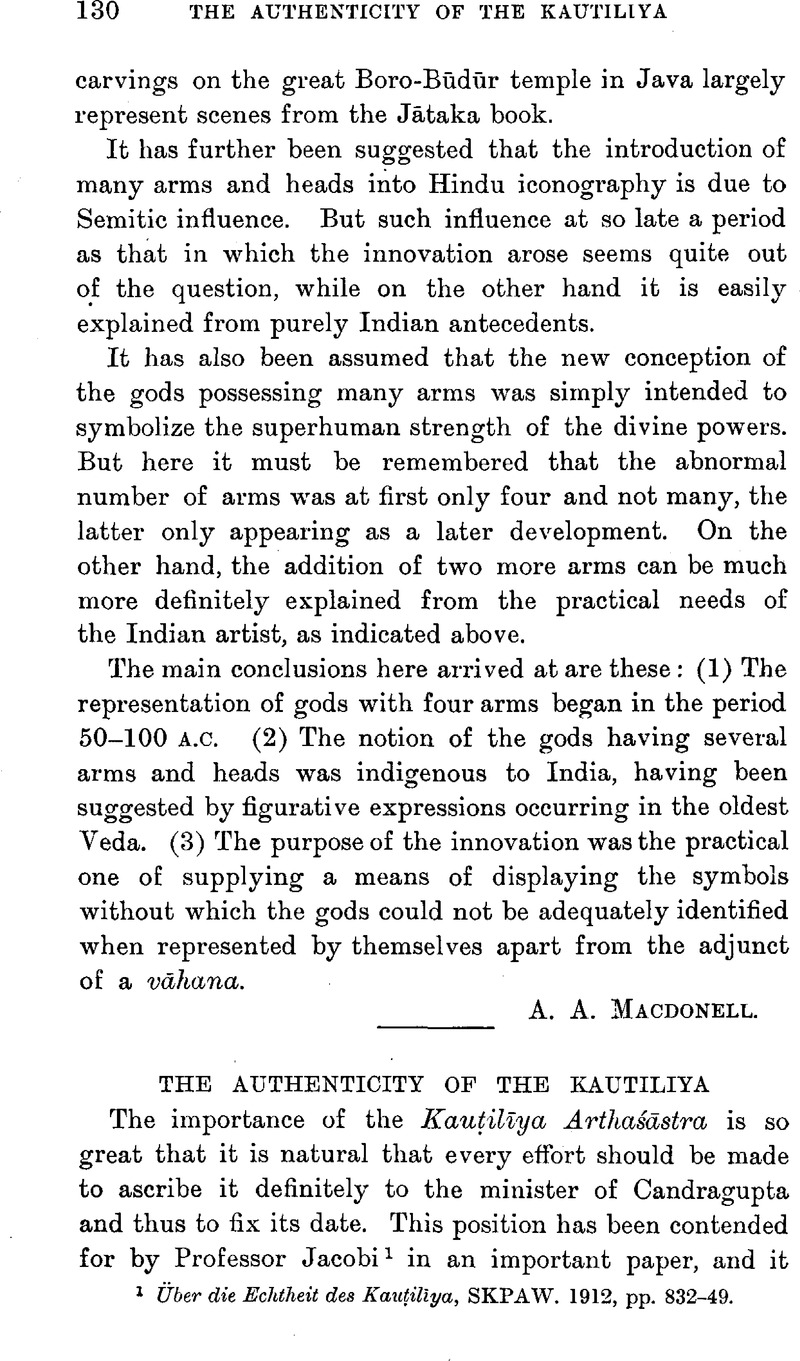Article contents
The Authenticity of the Kauṭilīya
Published online by Cambridge University Press: 15 March 2011
Abstract

- Type
- Miscellaneous Communications
- Information
- Copyright
- Copyright © The Royal Asiatic Society 1916
References
page 130 note 1 Über die Echtheit des Kauṭilīya, SKPAW. 1912, pp. 832–49.Google Scholar
page 131 note 1 Über das Kauṭilīyaśāstra, Breslau, 1908.Google Scholar
page 131 note 2 Über die Anfänge des indischen Dramas (München, 1914), p. 17.Google Scholar
page 131 note 3 In his edition, p. xii.
page 135 note 1 That śloka here is used of prose (as in the copyist's sense)—see Hertel, , Tantrākhyāyika, i, 18—is most improbable.Google Scholar
page 135 note 2 p. 840.
page 136 note 1 The MSS. agree in the use of i; see Hillebrandt, , p. 3.Google Scholar
page 136 note 2 SKPAW. 1911, p. 961.Google Scholar
page 136 note 3 Loc. cit. pp. 962, 963.
page 136 note 4 SKPAW. 1912, p. 841.Google Scholar
page 136 note 5 SKPAW. 1911, p. 971.Google Scholar
page 137 note 1 Hertel, , Tantrākhyāyika, i, 142–5Google Scholar: it may be noted that on p. 145 Hertel misunderstands the words tatra yad bhūyiṣṭhāḥ kāryasiddhikaraṁ vā brūyus tat kuryāt: this does not provide for the acceptance of a majority view of ministers in a difficult situation, but leaves the king to take a majority view or the best advice given. The omission of vā as in the Tantrākhyāyika is easy, but misses the point. This view he wrongly uses to support his rendering of prayogam upalabhya in the Arthaśāstra (p. 22, n. 4)Google Scholar, which no doubt refers to Cāṇakya's practical experience, as taken by Jacobi, , SKPAW. 1912, p. 846.Google Scholar
page 137 note 2 For arguments for a late date and fictitious authorship see Jolly, J., ZDMG. lxviii, 355–9.Google Scholar
- 2
- Cited by


